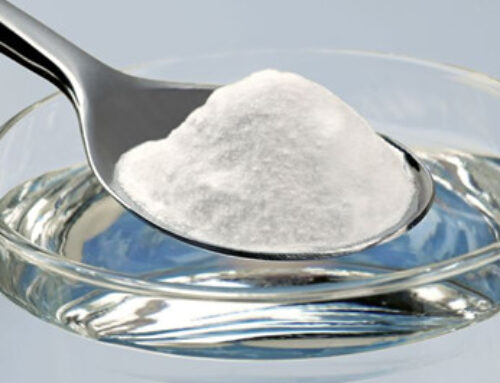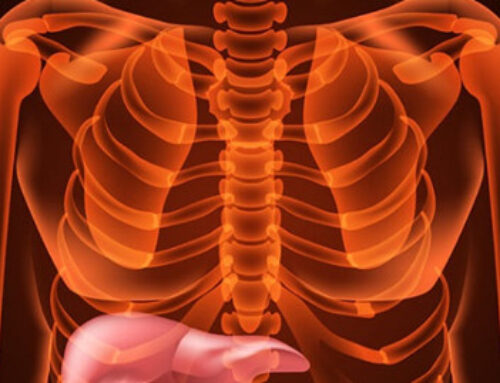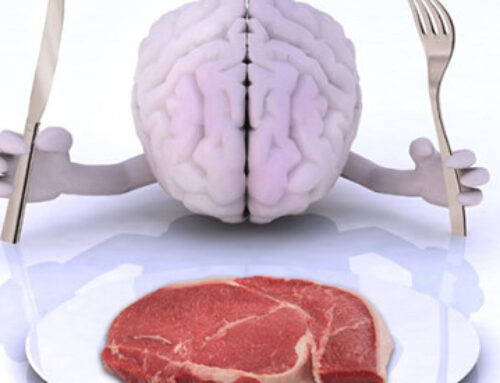In this article, I discuss a potent anti-nutrient and how to avoid it in your diet.
In the past, I’ve written articles about the chemicals found in plants including antioxidants, vitamins and minerals that help keep us healthy and heal us when we are sick. But, for those of you who are not familiar, there are two sides to plants. The same healthy and life-promoting plants that sustain us can also hurt us.
Plants cannot run away from their predators because they are anchored where they are growing, but nature has allowed plants a way to protect themselves, or they would be consumed by their predators to the point of extinction. All creatures are hard-wired to do one thing, and that is to make copies of themselves to perpetuate their species. Plants are no different than other creatures—they live to reproduce. And for their own protection, which is necessary to accomplish that goal, plants produce some toxic chemicals.
If you read my newsletter, you may remember that oxalates are one plant chemical that can cause problems in those of us with damaged guts. Oxalates are tiny, sharp organic acid salts linked to inflammation throughout the body. Some of us lack the microorganisms in our guts to break down oxalates. When our body cannot break them down, oxalates accumulate in our tissues and cause inflammation. This can show up as rheumatoid arthritis, kidney stones, misdiagnosed UTI’s, fibromyalgia, vulvodynia and many other health problems. Oxalates are found in high amounts in rhubarb, spinach, nuts and potatoes for starters, and in varying amounts in other plant foods (you won’t find oxalates in animal foods or fats). Oxalates will at some point give the creature eating the plant a belly ache to discourage eating to the point of being totally consumed. This is one example of how plant chemicals evolved to protect the plant long enough to reproduce. (For more on oxalates, see my article: What’s Wrong with Superfoods?)
There are many other chemicals in plants besides oxalates; most of these are in a family called lectins. Lectins have two faces—some are quite toxic to humans, with the potential to cause health problems, and some are useful in supporting healthy metabolic processes. Some lectins have both healthful and harming potential. Alkaloids (including morphine, codeine, nicotine, cocaine, caffeine, strychnine and more), tannins and saponins are all lectins. These substances have a bitter taste and will put off most insects and animals, including us (1). You can taste the bitter saponins on quinoa before it is washed. This bitter taste is a warning to anything or anyone eating it that it is toxic.
In some plants, lectin levels are high but the plant offers health benefits as well, including anti-oxidants and other anti-cancer properties (2). In some cultures, people have learned to get past the bitterness and even enjoy the taste of plants that are high in alkaloids in order to take advantage of their health benefits. A good example is bitter melon, which is commonly consumed in Asia and tastes a lot like a bitter cucumber. I have to admit, I have come to like the taste of bitter melon because I know it is healthful to eat.
Plants from the nightshade family (potatoes, tomatoes, peppers, and eggplant) are considered to be healthy, but are also high in several lectins, the most common one is solanine, which is a glycoalkaloid. The lectins in the nightshade family are extremely inflammatory for people who are sensitive. Sensitivity can show up as painful joints, rheumatoid arthritis and osteoarthritis. An easy way to find out if you are sensitive is to eliminate these foods for a month and see how you feel. For myself, this was difficult, but cutting out nightshades in my diet has helped a lot with the inflammation I was experiencing in my hands and finger joints. Within a short time, my inflammation was significantly reduced. Of course, cutting out some of my favorite summer treats has been hard to do during the height of the tomato season!
Although the nightshade family is known for high levels of lectins, there are even higher levels of lectins in grains, legumes and nuts. There are many reasons why wheat is inflammatory and it is not just limited to gluten proteins (which are also lectins). One more reason to pass on bread, especially whole wheat bread, relates to the lectin content in the bran (the outer part of the seed of the wheat kernel). The wheat germ, which has always been considered to be the healthiest part of the wheat kernel, is high in wheat germ agglutinin, a potent lectin that deters pests, and has a probable link to gut inflammation (3). This goes against the popular dietary guidelines put out by our government recommending everyone above the age of 9 consume 3-5 serving of whole grains every day (4)!
If you look back at our history, a lot of effort went into the removal of the bran in grain, especially in Asia, where white rice is a large part of the traditional diet. Asian cultures have always known that the consumption of rice with the bran is indigestible, because it is high in inflammatory lectins.
Lectins are very common in all plants and plant foods, but especially grains, nuts/seeds and legumes, which include beans, lentils and soy (lectins are especially high in soy products, with the exception of fermented soy) (1). Those of us with inflammatory issues may need to limit our consumption of lectins. Thankfully, proper preparation can significantly reduce lectin and levels of other anti-nutrients so we do not need to eliminate these foods entirely.
Cultures, especially natives in the New World, who consumed many high-lectin foods, have always known how to reduce the lectin content in their diet. South Americans frequently consumed grains like quinoa (and still do) but have always taken the time to prepare them correctly, by soaking them, then fermenting them, and then cooking them. This reduces or destroys the lectins and makes the grains much easier to digest. A quick and more modern way to reduce lectins in quinoa is to soak them for 12-24 hours, then rinse and pressure cook them. This process makes quinoa much more digestible and reduces your chances of developing inflammation. You can try this with other high-lectin foods, such as beans and lentils.
The inflammation caused by the consumption of these foods often shows up as weight gain. Another high-lectin grain is corn. Corn and soy are fed to pigs and cattle to fatten them for slaughter. Pigs in the wild are not obese like farmed pigs, who are fattened on a diet of corn and soy. And the same goes for our beef—cows do not like grain and will not eat it if grass is available. It is well-known in the industry that cows fed corn and soy to fatten up also have terrible problems with gastritis and GERD. Their food has calcium carbonate (essentially, TUMS) added to it, to treat the heartburn which develops from the consumption of corn and soy. Maybe we should think about these repercussions when we are using so much corn in our diet. Could it be that some of these high-lectin foods which are a huge part of the Standard American Diet are contributors to widespread gut inflammation, heartburn and the obesity epidemic?
If you are dealing with long-standing health issues and struggling to find resolution, you might replace foods high in lectins with those that are low lectin or lectin-free. Many foods in our processed American diet are very high in lectins: bread, pasta, cookies and cakes, even gluten-free foods. Could the constant consumption of excess lectins in our foods be behind this troubling epidemic of chronic sickness and obesity? Eliminating gluten may not be enough, especially if you have replaced your gluten with gluten-free foods made with alternative seeds flours (nut), and gluten-free grain flours, which are all high in lectins.
Writing this article, I can’t help but think about one iconic, high-lectin American food that is consumed in huge amounts by school children, and eaten regularly by everyone in our country: pizza. Made with wheat crust and tomato sauce, I would call this popular food a lectin bomb! How many other “lectin bombs” are we eating daily? How many people are reacting to these foods and don’t realize it?
It is shocking that so many of the items we have considered healthy foods, indeed, some of the very foods we usually increase when we are trying to improve our diet, are loaded with lectins and may be very problematic for some of us, such as cucumbers, zucchini, whole grains and many more. But, there are ways to change the lectin content in some of our favorite foods through proper preparation and cooking. With nightshades, cucumbers and summer squash, the skin and seeds have the highest concentration of lectins. Peeling and seeding these “fruits of the vine” can significantly lower lectin levels. Considering the complexity of implementing a new diet lower in lectins, you may need to employ the help of a qualitied nutritionist familiar with lectins and other plant chemicals that are linked to chronic sickness and disease. Remember, if you are chronically sick, it may be that something you are eating is a much bigger problem than something you are not.
(See a great article I found on lectins; These 50 Foods are High in Lectins.)
Cited References:
- Dr. Mercola. The Case Against Beans and Other Foods Containing Toxic Lectins. Mercola Web site. Available here. Published May 22, 2017. Accessed September 2017.
- Encyclopaedia Britannica. Alkaloid. Encyclopaedia Brittanica Web site. Available here. Accessed September 2017.
- Pusztai A, Ewen SWB, Grant G, Brown DS. Antinutritive effects of wheat-germ agglutin and other N-acetylglucosamie-specific lectins. British Journal of Nutrition. 1993;70(1):313-321.
- Oldways whole grains council. U.S Dietary Guidelines and WG. Oldways Web site. Available here. Published 2015, accessed September 2017.










